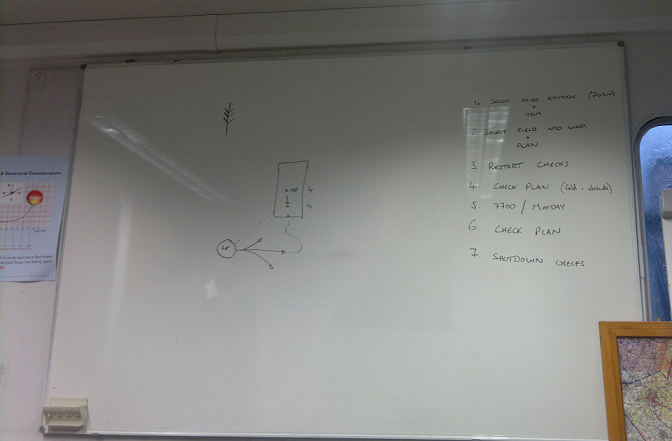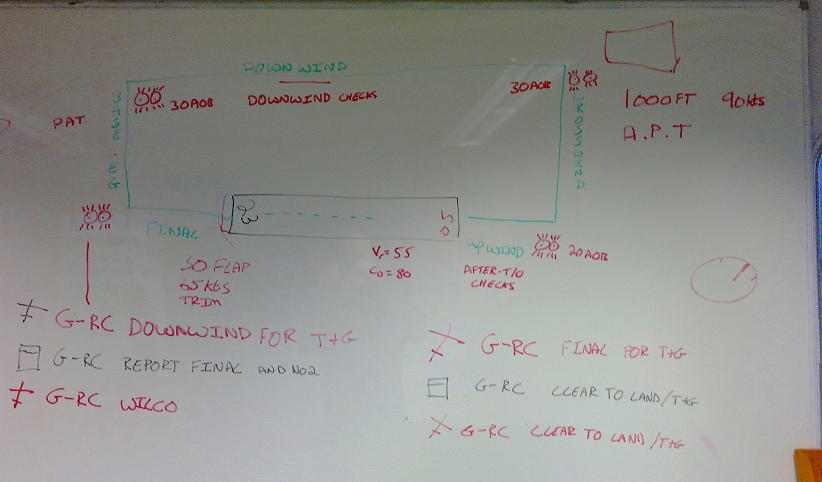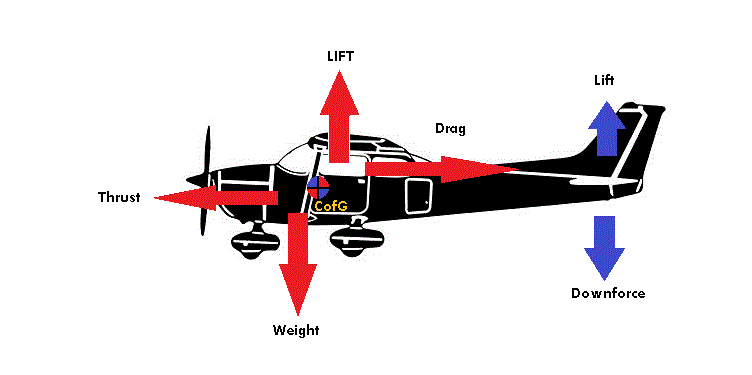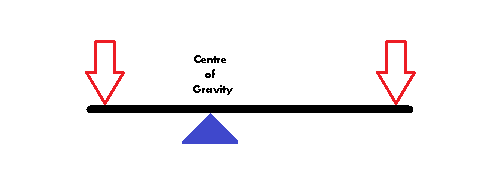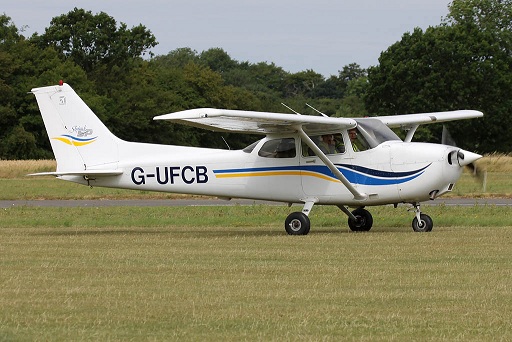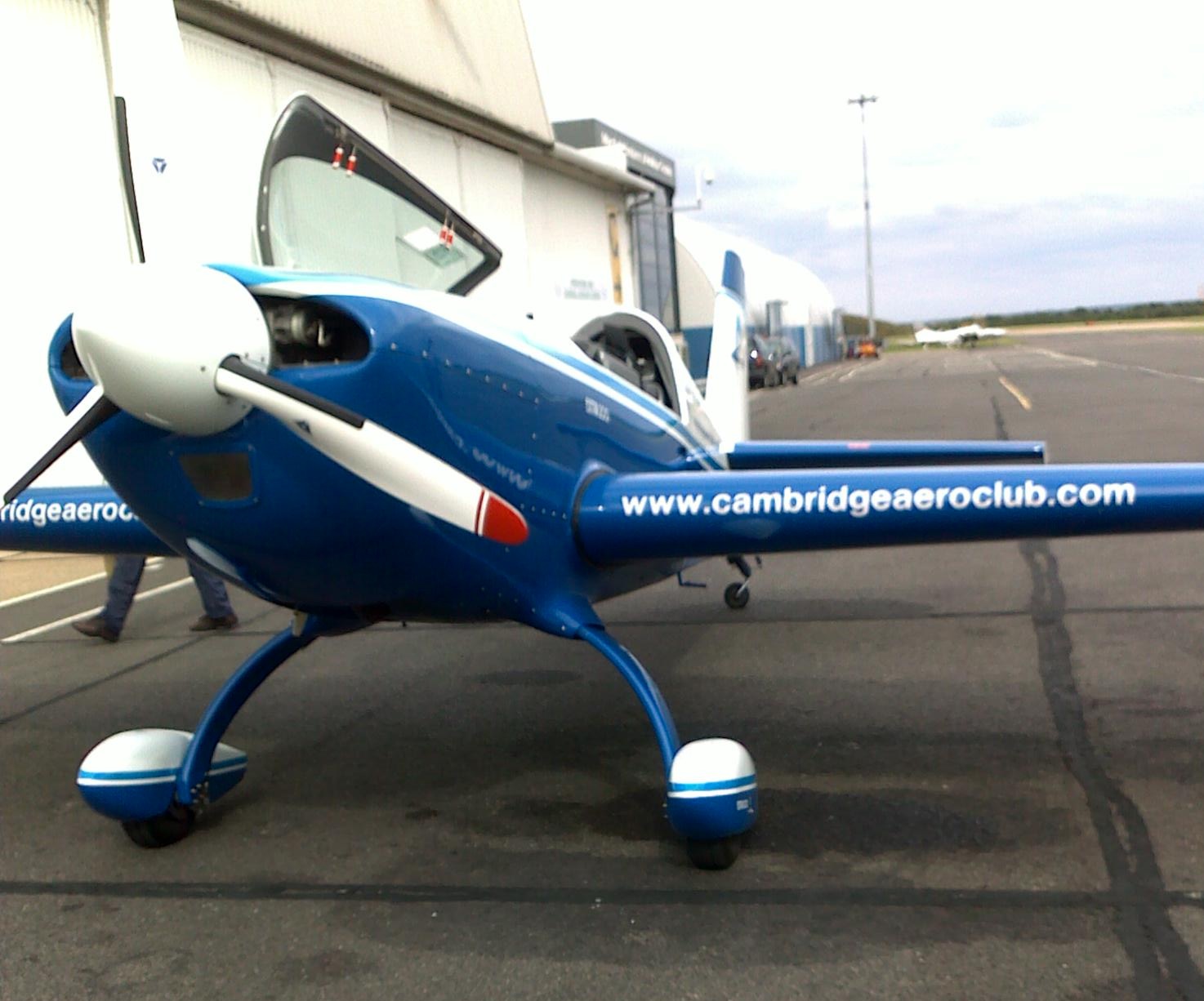Normally if the phone rings before 9am on a weekend, it’s the aero club, often a good thing as it means there’s a last minute slot going 🙂 However, on this particular day the phone rang, but realising it was past 9am, this couldn’t be a cancellation.
It was still the aero club, but this time ringing to tell me I was late for my lesson. ‘Lesson?, I never booked any lesson for this weekend, same time next week is what’s on my phone.’ Other than to suggest in over a year I’ve never missed one yet, we won’t go into who was right or wrong here, it doesn’t matter.
What made this particular call a bit strange was the background banter of whether or not I should just come in anyway:
“Come in….”
“What’s he doing?”
“Practice Forced Landings”
“Oh, well we don’t have the weather for that…”
Maybe I just wasn’t awake enough at the time, but after a debate of whether I could get down there quick enough to still grab the lesson, this banter was some what amusing 🙂
Bad weather seems to leave the instructors filing ‘important paperwork’ (possibly involving coffee and talking about the weather), so it doesn’t always mean it’s a total loss for a student. I was invited to go down anyway and we’d go through the briefing for the lesson. Good stuff (and the one thing in flying that is actually free! 🙂 ).
Practice Forced Landings
General idea is to get comfortable with the procedures involved should the engine stop or decide to burst into flames.
Without thrust, the aircraft will assume a landing configuration…….in as much as you’re going down whether you wanted to or not.
In the event such things occur, there’s a sequence of priorities and things to be getting on with in order to maximise the chances of the end result being a landing, rather than a crash.
- Set Best Glide Range Airspeed : 70 knots in a Cessna 172 – Anything faster or slower and your glide range will be reduced, though worth noting that best glide range is not the speed to set if you want best glide endurance……..but unless we’re trying to avoid ditching in the sea for the maximum amount of time possible, range is what we want.
- Select a Field : It might be a bunch of houses ahead of us, but perhaps there’s a field behind or on the far side of us, you never know your luck maybe even an airfield 🙂 Preferably into wind as this will reduce our ground speed, start planning – can we reach it etc. When selecting a field, it’s all about the S’s:
- Size
- Shape
- Surface
- Slope
- Surroundings
- Restart Checks : Assuming this is an engine failure, now we have given ourselves maximum range and know where we’re going to try and put the plane if all else fails, time to see if we can’t get the engine going again.
- Mixture: Is it rich? Exercise it and reset to rich
- Throttle: Is it open? Exercise it and set to about half power.
- Fuel Shut Off: Should be ON (fully pushed in)
- Fuel Tanks: Select Both
- Aux. Fuel Pump: ON
- Magnetos: Left, Right, back to Both
- Try Restarting the engine.
- Check the Plan: If it hasn’t restarted, time to double check we can still make the intended field, that nothing new hasn’t now come up to make that original field unusable (e.g. now we can see there are power lines etc.), are we still at the right airspeed.
- Distress Call: Time to wake up the world……7700 on the Transponder to indicate an emergency, radio call “Mayday, Mayday, Mayday <Call Sign> <Type of Emergency> <Location> <Number of Persons on board>”. Unless by some miracle there is an airfield within glide range, in which case this radio call should be enough to promote you to number 1 in the landing order. Other than deploying the emergency services, that’s about all Air Traffic can help you with – so unless the engine restarts and the crisis goes away, not much need in talking to them after this.
- Check the Plan: Airspeed / Can we still make it / Is it still the field for us.???
- Shutdown Checks: This plane is now officially no fun, but it’s potentially going to be less fun if you hit the ground with everything live, time to turn it all off (If the emergency was a fire, you’d have already forgotten about restarting it):
- Mixture : Lean / Idle Cut Off
- Throttle Closed
- Fuel Shutoff: OFF (Pulled out)
- Aux. Fuel Pump: OFF
- Magnetos: Off
At some point we want to turn the Avionics and Master Switches OFF, however, the Avionics drives the transponder, so we might want to avoid turning that off straight away. The master switch drives everything, if we turn that off, we’ll lose the avionics, the flaps, the lights…….primarily we’re concerned we might still want those flaps and we won’t want to take them early, because once the height is lost there will be no getting it back. As a result these will be the last two switches to go off.
Circuit / Approach
As per the sketch on the white board above, the aim is to be at 1000ft at a specific point, or “Low Key” point. From here the final part of the approach can be flown:
- Too Low : Fly more directly to the aiming point
- Too High: Fly away from the aiming point, or ‘S’ turn.
The idea is to aim for a touch down point about half way into the field selected, as the height is lost and it is certain we could make that point, the aiming point is brought closer to around a third into the field. Though speed needs to be considered, as the book of words says: “Better to reach the far end at taxi speed……..then to undershoot into the near side hedge at flight speed.”
At around 500ft, staying legal, the practice will be called off and a verdict of whether we’d have made it or not given. It’s probably ironic that aircraft have some of the toughest design & production certification requirements of any industry – but you won’t find any air bags or crumple zones here, they’re designed for high probability of safety in the air, not crashing into a fence.
Well that’s the general theory…..
Next lesson we’ll see how it turns out in practice 🙂
